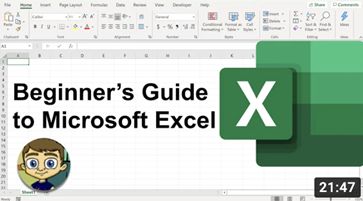Course Content
1. The elements of communication
2. Internal communication plan
3. Metrics
4. Conclusions
Communication 4.0 represents a challenge due to the enormous speed of digital transformation. We have reviewed external communication processes with an emphasis on the digital tools needed to effectively communicate our ideas and reach our target audience, stressing the creation of Twitter, Facebook, LinkedIn, and Instagram. We have also seen the need for a digital marketing strategy that allows us to define our objectives and the subjacent principles that govern any marketing proposal. On the other hand, we have seen the creation of an internal communication plan, highlighting the most remarkable features and the need for open and fluid communication between employees. We closed our module with a brief approach to social media metrics to evaluate the effectiveness and efficiency of our communication strategies. In short, we focused on practical creation, promoting a step-by-step vision of development and implementation. We hope this module can contribute to achieving your goals and help you to lead your future communication strategy. Remember that adaptation is a fundamental competence of the creation process and, therefore, we want to encourage you to be updated on the trends of communication 4.0 and to make the most of your efforts.
3.2 Microsoft Excel
Now, we move on to Excel! This is a data processing tool. With Excel, you can clearly display your data in spreadsheets and charts. It is easy to use and saves you from having to buy business management software. This tool is a real time-saver and essential for monitoring cash flow, calculating costs, and more generally, for any custom calculation document (management, organisation, schedules, budget follow-up, etc…).
As an entrepreneur, this software will be perfect to do your accounting for example!
To learn the basics of Excel, we suggest you watch this video. It will give you the keys to better understand how this tool works.

Now that you know more about Excel, it’s time to put into practice all the knowledge you learned in the video!
 Activity: Discovering Microsoft Excel (20min)
Activity: Discovering Microsoft Excel (20min)
The goal of this activity is to get you to manipulate this tool by creating a table, its data, and simple formulas! If you have any problems, don’t hesitate to review parts of the video.
- Locate Microsoft Excel on your computer and create a new document.
- Activate the cell whose address is A2.
- Write “Month” and press “Enter”.
- In the following cells, enter the corresponding contents :
- Sales price
- Quantity sold
- Complete the entry with the following values in the table (from B3:B14 to C3:C14):
January | 20 | 578 |
February | 20 | 409 |
March | 22 | 478 |
April | 22 | 509 |
May | 22,50 | 389 |
June | 22,50 | 698 |
July | 22,50 | 700 |
August | 22 | 589 |
September | 22 | 468 |
October | 22 | 423 |
November | 23 | 535 |
December | 23 | 674 |
- Lay out the text in the cells and adjust the size of the columns.
- Add the borders.
- Save the file as “Accounting”.
- Enter the “January” Text in cell A3 and automatically complete the series until December.
- Sort the table from the highest to the lowest selling price.
- Rename the Sheet1 to “Turnover 2021”.
- Write “Monthly turnover” in D2.
- Write “=B3*C3” in D3. This will give you the monthly turnover. Do the same for the other months.
- In B16, write “Annual turnover”.
- In C16, calculate the annual turnover with a formula.
- In B17, write “Average annual turnover”.
- In C17, calculate the average annual turnover with a formula.
 Additional exercise: Mail Merge (15min)
Additional exercise: Mail Merge (15min)
Too easy? Want to go further? No problem! We have an additional tutorial on the function Mail Merge! This exercise combines both Word and Excel. It will allow you to automate the creation of letters, labels, envelopes… For a considerable saving of time!




 Beginner’s Guide to Excel
Beginner’s Guide to Excel